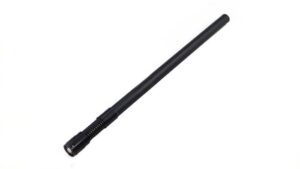When it comes to smart homes, you can never get around this topic, smart home wireless protocols.
Which are the common smart home wireless protocols?
The common smart home wireless protocols on the market are Bluetooth, WIFI, 433 MHz, ZIGBEE, Z-WAVE, Lora, etc.
The smart home wireless protocols communication protocols that are truly suitable for smart homes must have the following characteristics.
1) Anti-interference, i.e. stability, is the main reason why most of the current smart home experience is not good
2) Low power consumption, much smart hardware is currently powered by dry or lithium batteries, so the power consumption requirements are relatively strict
3) Confidentiality, as smart home, involves some home devices and security hardware, such as door locks, so there are considerable requirements for information security
4) Self-grid capability, as the smart home is a system solution, not a single product, the self-grid capability of the protocol is also a must
5) Interoperability, at this stage, most manufacturers’ practice is that their products can be interoperable and incompatible with other brands’ products
In recent years, with the influx of thousands of enterprises into the smart home, there are traditional home appliance enterprises (such as Haier, Midea, TCL); There are traditional electrician and appliance enterprises (Oppo, ABB, Rogaland, etc.)
Domestic and foreign operators (the three major domestic operators, AT&T in the United States), and domestic security monitoring-type enterprises (Haikang, Dahua, etc.).
The main smart home devices include a central control host, lighting control panel (zero firewires); smart curtains, networked smart door locks, security sensors (door magnet, human infrared, smoke, gas, water), mobile cameras, air detection sensors, background music, home music, etc. In different brands, the products have more or less the same functions. And all brand owners will tell you that the system is powerful and stable and can be DIY.
Smart home topology diagram
Once applied in the actual space, it is full of problems. Especially in a slightly larger area of the villa, with more walls, a lot of equipment transmission signal is sometimes stable, sometimes unstable, ultimately leading to more dealers after-sales, more customer complaints.
The causes of system instability, there are two main reasons: the first is the field environment of the network environment; the second is the intelligent system itself, which is largely due to the characteristics of its use of wireless communication technology to determine.
The following table briefly dissects the comparison of the technical characteristics of common smart home wireless protocols.
| Comparison of common smart home wireless protocols | |||||
| Wireless technology | 433MHz | Bluetooth | WIFI | Zigbee(2.4G) | Z-wave |
| Network topology | Star type | Decentralized network | Star type | Grid type | Grid type |
| Anti-jamming capability | Low | Low | Low | Low | High |
| Development difficulty | Low | Low | Low | High | High |
| Network expansion method | Multi-base station | Multi-base station | Multi-base station | Intangible repeater | Intangible repeater |
| Transmission distance (outdoor) | 100~1000m | 30m | 300m | 100m | 100m |
| Penetration | 2 walls | 1 wall | 1 wall | 1-2 walls | 2 walls |
| Operating Frequency Band | Global License Free Band 433MHz | Global License Free Band 2.4GHz | Global License Free Band 2.4GHz | Global License Free Band 2.4GHz | 915 MHz (USA) 868 MHz (Europe) |
| Operating Power | Low | Low | High | Low | Low |
| Network security | Low | Medium | Medium | Medium | High |
| Number of connected devices | <200 (within 40 recommended) | <7 (within 2 recommended) | <50 (within 15 recommended) | <635 (within 150 recommended) | <232 (within 200 recommended) |
| Roaming delay | Several seconds | 3 seconds | Ten seconds or so | 1.5 seconds | 0.5 seconds |
| Hibernation wake-up speed | <30 ms | 3 sec | 3-5 sec | 30 ms | 15 ms |
| Communication dead space | May exist | May exist | May exist | Will not exist | Will not exist |
| Network deployment difficulty | Large | Large | Large | Medium | Small |
| Network coverage | Small | Small | Medium | Large | Large |
| Communication stability and reliability | Low | Low | Medium | Medium | High |
The above are only the technical characteristics of the smart home wireless protocols because the modules used by domestic manufacturers will be different, so even if the same technology, in actual use, there is not the same performance!




